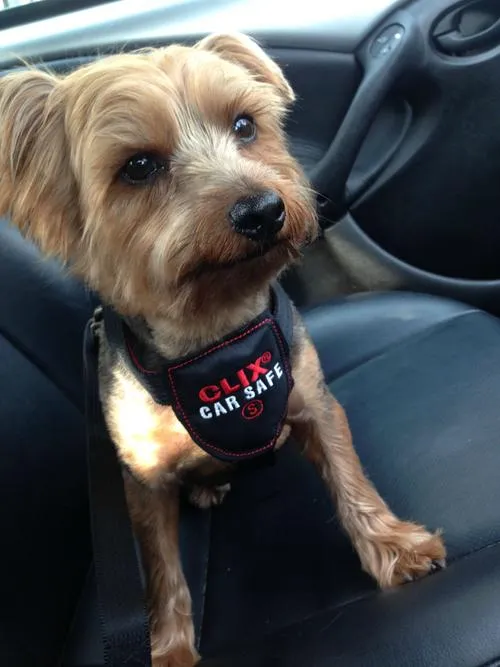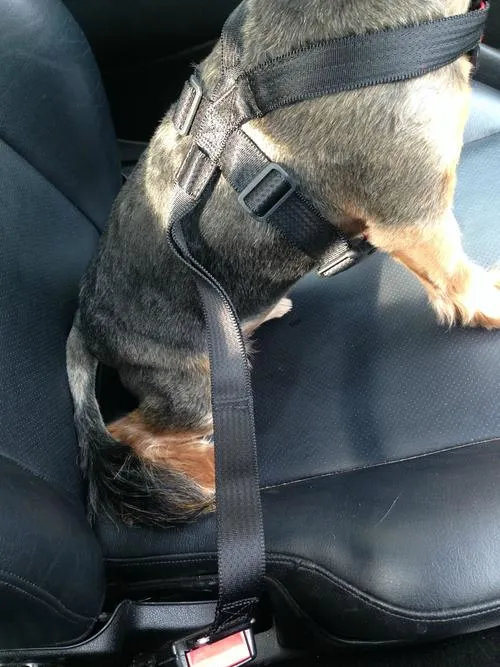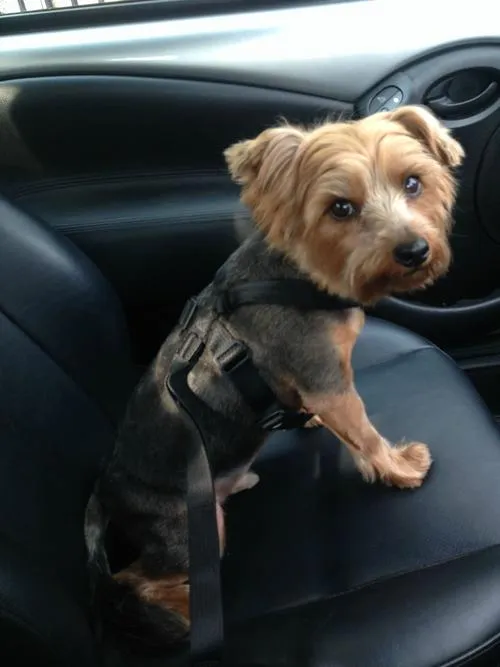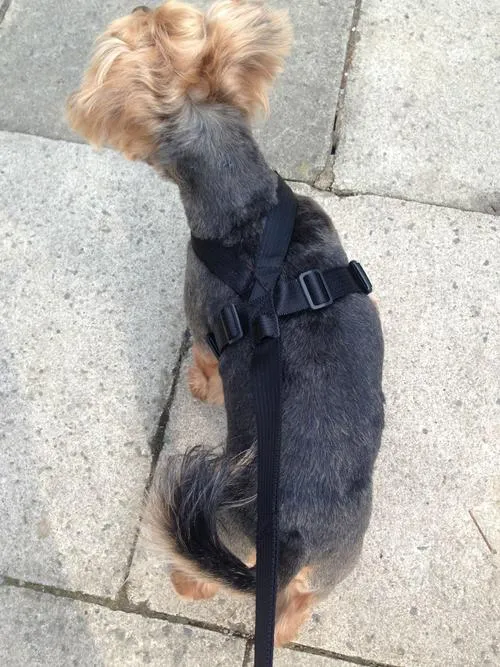Traveling with your beloved canine companion should be an enjoyable experience, free from the worry of their safety. Ensuring your dog is securely restrained while still being comfortable in the car allows you to focus on the road ahead. This review by Layla Flaherty, accompanied by her 3.5-year-old Yorkshire Terrier, Buttons, explores the capabilities of the CLIX CarSafe harness.
Buttons, a familiar face from a previous K9 Magazine photoshoot, is now an integral part of Layla’s daily travels as she navigates the demands of her burgeoning business, Urban Paws.
Understanding the CLIX CarSafe Harness
The CLIX CarSafe harness, a product of The Company of Animals, a firm renowned for its innovative pet care solutions, was conceived by Dr. Roger Mugford. It is meticulously designed to offer both paramount safety and superior comfort for dogs, not only during car journeys but also on leisurely walks.
A key feature is its ‘X-Cross’ design, which elegantly wraps around the dog’s chest. This not only ensures an ergonomic and comfortable fit but also guarantees the harness remains in its optimal position for maximum protection.
Constructed from materials meeting stringent safety standards, akin to those used in car seat belts, the harness boasts a continuous loop design. This engineering ensures that in the unfortunate event of an accident, the inherent strength of the material will provide crucial support and safety.
Real-World Performance: Layla and Buttons’ Experience
For Layla, Buttons is her constant co-pilot. As she drives a two-seater car, the absence of rear seats presents a challenge for safely restraining Buttons during any car trip. Like many, Layla often finds herself pressed for time, aiming to reach her destination as efficiently as possible.
Throughout their travels, including a recent memorable trip to Dubai where they opted for the luxury of renting a BMW X7, Buttons’ comfort has always been a priority. The sophisticated vehicle, combined with the added safety of the seat belt, ensured their four-legged friend was both safe and content throughout their journey.
 Buttons enjoying the ride in the CLIX CarSafe Harness
Buttons enjoying the ride in the CLIX CarSafe Harness
Layla observed that Buttons’ primary joy during drives was gazing out the window at the passing world. However, abrupt turns would often cause him to slide, or he’d cling on precariously to avoid falling. This situation prompted Layla to seek a solution for his safety and her peace of mind, wondering if a dog seat belt even existed.
The recommendation from K9 Magazine led her to the CLIX CarSafe harness, priced at approximately $27.00 on Amazon. Her initial impression upon its arrival was one of immediate admiration.
The harness proved exceptionally easy to assemble and adjust, catering perfectly to Buttons’ specific shape and size. Its double-sided adjustable buckles simplify the process, eliminating the need to maneuver the dog’s legs. The harness effortlessly slips over the dog’s head, the buckles are fastened on each side, and then securely attached either directly into the seatbelt socket or by threading the seatbelt through the integrated handle. The entire setup took mere seconds.
Buttons appeared remarkably comfortable wearing the harness, and Layla particularly appreciated the integrated soft padding designed to protect the most sensitive areas of his body. The material of the harness felt robust and secure, instilling a sense of confidence that Buttons was both comfortable and safe, allowing Layla to drive with peace of mind.
 Close-up of the CLIX CarSafe Harness padding
Close-up of the CLIX CarSafe Harness padding
Remarkably, Buttons remained comfortably seated in the front seat for the entire journey, a first for him. Importantly, the harness allowed him sufficient freedom to move slightly, which was beneficial. As Buttons enjoys observing people and the world during car rides, the restraint did not prevent him from enjoying his favorite pastime.
Versatility Beyond the Car
A pleasant surprise for Layla was discovering the harness’s dual functionality. It also serves effectively as a walking harness. This means that upon reaching their destination, a lead can be directly attached to the harness, eliminating the need to remove the car safety equipment and swap to a separate walking harness, only to reverse the process for the return journey.
The reinforced padding on the chest area provides enhanced control, whether ensuring safety during a drive or managing the dog during a walk.
 Buttons wearing the CLIX CarSafe Harness on a walk
Buttons wearing the CLIX CarSafe Harness on a walk
The Verdict
In summary, the CLIX CarSafe harness proved to be a resounding success, equally effective for walking as it was for travel. Buttons did not experience any choking when pulling on the lead, a common occurrence when dogs are initially excited on a walk. Layla found this harness to be a significant improvement over a previously used alternative.
 Layla Flaherty and Buttons with the CLIX CarSafe Harness
Layla Flaherty and Buttons with the CLIX CarSafe Harness
Layla was thoroughly impressed with the harness’s unique design, its comfort, the safety features, its user-friendliness both in and out of the car, and its overall excellent value for money. She wholeheartedly recommends the CLIX CarSafe harness to any dog owner seeking a reliable solution for their pet’s safety during travel and outings.
The CLIX CarSafe harness is available in four sizes: extra small, small, medium, and large. You can purchase it online.
